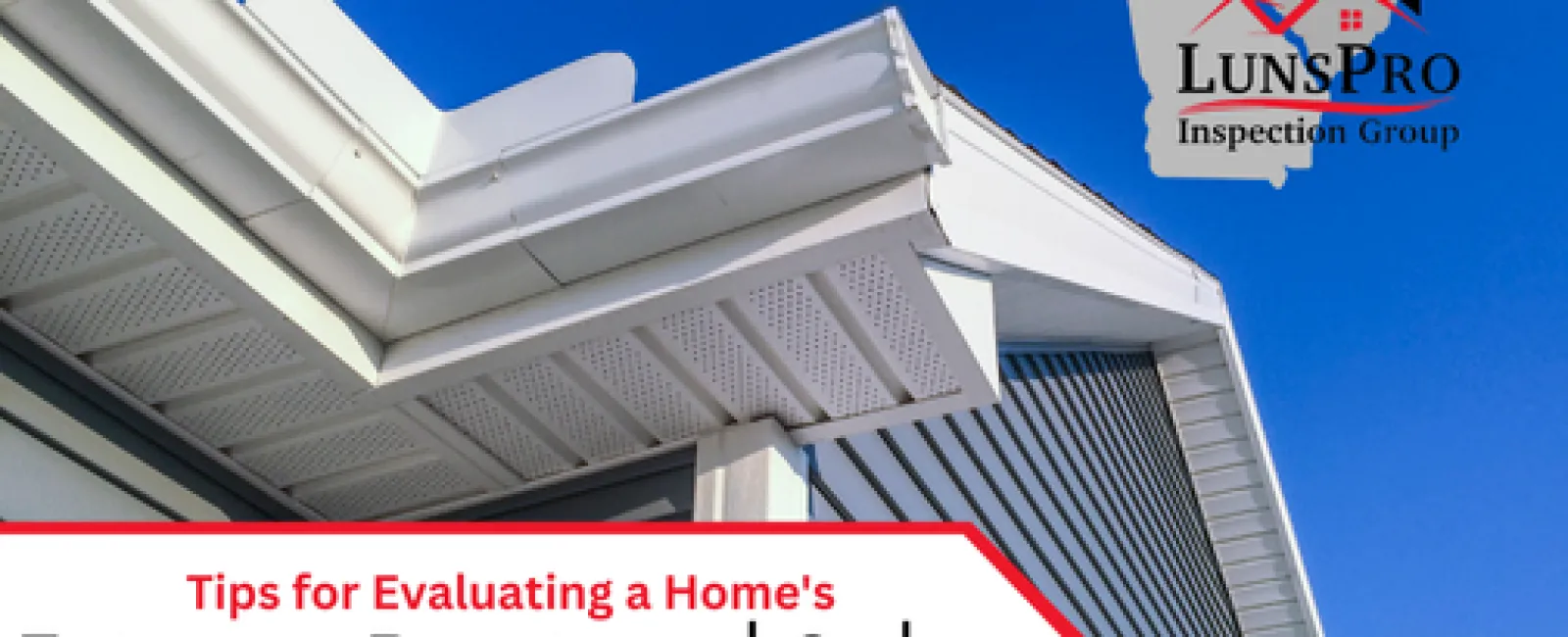The exterior of a home is more than just an aesthetic feature; it serves as the first line of defense against weather, pests, and other environmental factors. Paint and siding play a critical role in protecting your home's structure while also contributing to curb appeal and resale value. For homeowners and prospective buyers, knowing how to evaluate a home's exterior paint and siding can reveal potential maintenance needs or hidden issues that may require attention. At LunsPro Inspection Group, we regularly identify exterior concerns during our Carolina residential and commercial inspections, offering North Carolina homeowners actionable advice for maintaining their properties.
Why Exterior Paint and Siding Matter
The condition of a home's exterior paint and siding impacts more than just appearance. Properly maintained exterior surfaces prevent moisture intrusion, shield the structure from UV damage, and reduce the likelihood of costly repairs. During North Carolina home inspections, our team frequently emphasizes the importance of regular exterior evaluations to identify and address problems before they worsen.
Additionally, well-kept paint and siding can enhance a home's energy efficiency by improving insulation and reducing air leaks. This is especially beneficial in North Carolina's variable climate, where homes are exposed to humidity, storms, and seasonal temperature changes.
Signs of Problems with Exterior Paint
Evaluating a home's paint condition is relatively straightforward, but there are key signs to watch for:
Peeling or Cracking Paint
- Indicates prolonged exposure to moisture or extreme weather.
- Often seen on wood surfaces where paint has aged beyond its lifespan.
Fading Colors
- UV rays from the sun cause paint to fade over time.
- Fading can also indicate that low-quality or improperly applied paint was used.
Blistering Paint
- Blisters form when paint traps moisture beneath its surface.
- This often points to inadequate surface preparation before painting.
Chalking
- Powdery residue on painted surfaces suggests weathering and the breakdown of paint components.
Water Stains or Discoloration
- Visible stains often result from leaks or poor drainage.
Key Issues to Look for in Siding
Siding serves as a protective barrier for the home. However, different siding materials present unique challenges. During our Carolina residential and commercial inspections, we frequently encounter the following issues:
1. Warping or Buckling
- Vinyl siding can warp under intense heat or if improperly installed.
- Wood siding may buckle due to excessive moisture or insufficient ventilation.
2. Cracks or Holes
- Cracks compromise the siding's ability to protect against weather and pests.
- Small holes often indicate insect activity or accidental damage.
3. Mold, Mildew, or Algae Growth
- High humidity in North Carolina creates the perfect environment for organic growth on siding.
- Green or black stains not only affect appearance but can also weaken the siding material.
4. Loose or Missing Panels
- High winds or poor installation can cause siding panels to become loose or fall off.
5. Rotting Wood Siding
- Wood siding is vulnerable to rot if not properly sealed and painted.
- Rot often begins at the base, where moisture accumulates.
Evaluating the Exterior Like a Pro
Conducting a thorough evaluation of your home's exterior paint and siding requires careful attention to detail. Here are the steps you can take:
Step 1: Walk the Perimeter
Start by walking around the property and observing the siding and paint from multiple angles. Look for visible damage, discoloration, or uneven surfaces.
Step 2: Inspect for Moisture Issues
Check for signs of moisture, such as peeling paint, rotting wood, or mildew. Pay special attention to areas near gutters, windows, and doors, as these spots are prone to water infiltration.
Step 3: Examine Seams and Joints
Inspect where siding panels meet or where the siding meets the roofline and foundation. Cracks, gaps, or improperly sealed seams can allow water and pests to enter.
Step 4: Test Paint Durability
Run your hand across painted surfaces to check for chalking. If the paint leaves a powdery residue, it may be time for a repaint.
Step 5: Look at Trim and Details
Don't forget to inspect trim, fascia, and soffits. These areas are often neglected but can reveal important clues about the home's overall condition.
Tips for Maintaining Paint and Siding
Regular maintenance can extend the life of your home's exterior and reduce repair costs. Below are some practical tips:
1. Clean the Exterior Annually
- Use a garden hose or pressure washer to remove dirt, mold, and mildew.
- Avoid high pressure on delicate surfaces like wood or aging vinyl siding.
2. Repaint When Needed
- A quality paint job typically lasts 5-10 years, depending on the material and climate.
- Choose paints with UV protection and moisture resistance for North Carolina's weather.
3. Seal Gaps and Cracks
- Use caulk to seal gaps around windows, doors, and siding panels.
- Check these areas regularly, as shifting foundations or temperature changes can cause gaps to reappear.
4. Trim Vegetation
- Keep trees, shrubs, and vines from touching the home's exterior.
- Overgrown plants can trap moisture and accelerate siding deterioration.
5. Address Drainage Issues
- Ensure gutters and downspouts direct water away from the foundation.
- Poor drainage can lead to moisture problems that affect both paint and siding.
How Inspections Can Help
Regular inspections are critical for identifying hidden exterior issues that may not be immediately visible to the untrained eye. At LunsPro Inspection Group, we provide thorough evaluations of paint and siding during our Carolina residential and commercial inspections.
Why Choose Professional Inspections?
- Uncover Hidden Damage: Inspectors can detect issues like water infiltration, mold, and structural damage.
- Expert Recommendations: Receive actionable advice tailored to your home's specific needs.
- Peace of Mind: Understand the condition of your home's exterior and plan maintenance accordingly.
During North Carolina home inspections, we focus on identifying signs of wear, ensuring the property is protected from the elements.
The Importance of a Well-Maintained Exterior
A well-maintained exterior not only enhances your home's curb appeal but also protects its structural integrity. Neglecting paint and siding can lead to expensive repairs, reduced energy efficiency, and even health risks from mold or pest infestations.
Whether you're a homeowner looking to preserve your investment or a buyer evaluating potential properties, assessing the condition of paint and siding is essential. At LunsPro Inspection Group, we've helped countless North Carolina residents maintain their homes through our expert inspections and practical advice.
Your home's exterior paint and siding are more than decorative elements; they are critical components that protect against weather, pests, and time. Regular evaluations, timely repairs, and preventive maintenance can ensure your home remains beautiful and functional for years to come.
LunsPro Inspection Group is your trusted partner in maintaining property health and safety. Our comprehensive Carolina residential and commercial inspections provide North Carolina homeowners with the knowledge they need to address exterior issues and more.

